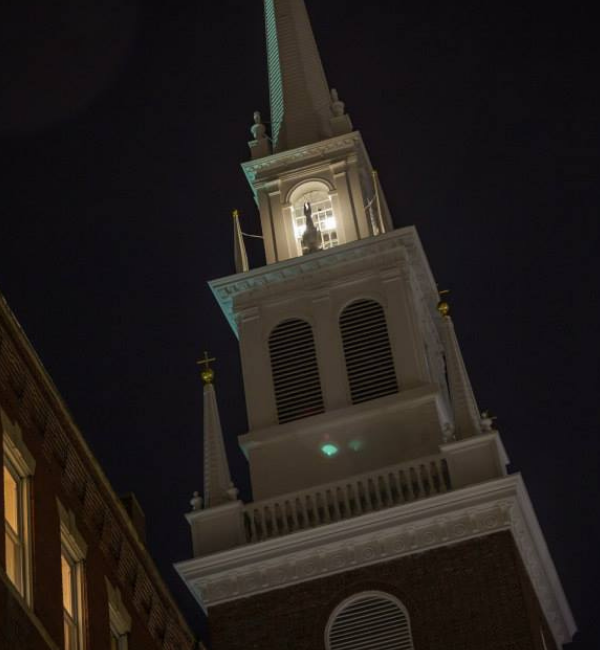Dr. Samuel Prescott is usually described as the third alarm rider to carry Dr. Joseph Warren’s alert on 18–19 Apr 1775, but that label should really apply to another man. There was an earlier alarm rider completely lost to history.
The first rider was William Dawes, Jr., adjutant of the Boston militia regiment. Following Dr. Warren's instructions, he rode out through the town gates in the early evening of 18 April.
Warren then turned to his Plan B. He passed the same alert to Paul Revere, who put into motion an arrangement he had made with Richard Devens and other Patriots in Charlestown.
Revere in turn informed John Pulling, a vestryman of Christ Church in the North End, now better known as the Old North Church. Pulling summoned Robert Newman, sexton of that church. Around 10:00 P.M. those men hung two lanterns in the church’s tall steeple, a signal that the British army was starting their expedition by boat across the Charles River.
That launch for the British march hinted at where they were headed: west-northwest toward Cambridge, Lexington, and Concord rather than west-southwest toward Worcester. The committee of safety had just met in west Cambridge, with some delegates staying overnight, and top officials John Hancock and Samuel Adams were in Lexington. Both Concord and Worcester were storing multiple cannon and other military supplies.
The Patriots seem to have had good intelligence about the British government’s priorities. Lord Dartmouth, the secretary of state, had told Gen. Thomas Gage to start arresting leaders of the Massachusetts rebellion. Dr. Warren’s mission for Dawes, therefore, was to warn Hancock and Adams that troops were moving toward them. The Patriots didn’t know that Gage’s real focus was Concord, where his spies had located cannon spirited out of Boston armories back in September.
Old North’s two lanterns shone across the Charles River. Those lights were in the steeple only a short time. Newman and Pulling didn’t wait to be caught in the tower. Still, the signal lasted long enough for the Charlestown Patriots to spot it and take the next step in Plan B. On their side of the river, a man mounted a horse and started riding west toward Lexington.
And then that guy disappeared.
Not only do we not know what happened to that second rider, none of the people involved in sending him out preserved his name in their papers or reminiscences. I suspect that if British patrols had detained the man, or if he had betrayed the cause, the Patriots would have told the story in some way. Instead, there’s complete silence about the man’s identity in the record. That strikes me as likely a result of profound disappointment in the man rather than worry or anger.
Paul Revere made himself Plan C, a backup courier of Dr. Warren’s message to Hancock and Adams. He arranged for colleagues to row him across the Charles River to Charlestown. Arriving after 10:30, Revere consulted with Devens and other locals, got another horse, and started riding west, following the same route as the second rider.
After crossing the Charlestown neck into the west part of town, Revere almost fell into the hands of British army patrols. He had to wheel his horse and ride north, coming back onto the main road to Lexington after a few miles. Nevertheless, with a shorter route and a faster steed, Revere arrived in Lexington about half an hour before Dawes.
Presumably those same mounted British officers in west Charlestown stopped the second rider. Perhaps they detained him, as other officers would later detain Revere in Lincoln. Perhaps they simply scared him into abandoning his ride.
Either way, the third alarm rider that night was Paul Revere. And the second rider, the one who apparently never made it out of Charlestown, is completely forgotten.

Never knew. Good stuff.
ReplyDelete